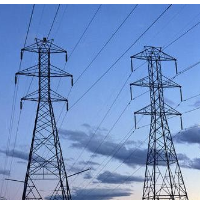Eight Months Later, San Jose Power Station Attack Looks More Ominous
 (photo: Liquidmatrix.org)
(photo: Liquidmatrix.org)
The Federal Bureau of Investigation (FBI) is investigating an attack on a San Jose-area PG&E power station in April that was originally considered a local case of vandalism, but is now being looked at in a more serious way.
The incident was flying under the media radar until Representative Henry Waxman (D-California) talked about it (pdf) last month at a congressional hearing on power grid security, a discussion often centered on computer hacking. But Waxman was more focused on physical attacks than cyber attacks in asking that the Federal Energy Regulatory Commission (FERC) be given more authority to deal with both.
The congressman described, without identifying the location, an “unprecedented and sophisticated attack on an electric grid substation with military–style weapons. Communications were disrupted. The attack inflicted substantial damage. It took weeks to replace the damaged parts. . . . The FBI and others are investigating this attack.”
The details described by PG&E and senior U.S. intelligence officials to a reporter for Foreign Policy could be considered even more troubling. On the day after the Boston Marathon attacks, a gunman or two entered two manholes at a power station just southeast of San Jose and severed fiber optic cables. 911 service was cut to the area and AT&T cellphone service was disrupted.
Someone then shot up the place with a high-powered rifle, pumping more than 100 rounds into several transformers. Cooling oil leaked out and the overheated transformers shut down. No one was injured and the disruption of electrical power was minimal. But power had to be rerouted and residents were warned to conserve energy.
AT&T offered a $250,000 reward for information leading to an arrest and conviction, but the authorities have come up empty. Mark Johnson, a former vice president for transmission operations at PG&E, was widely quoted as warning that this attack was just the start. “These were not amateurs taking potshots,” he said. “My personal view is that this was a dress rehearsal.”
Comments by FERC Chairman Jon Wellinghoff illustrated the conundrum faced by authorities seeking to rally support for securing key pieces of the nation’s infrastructure without sounding like they are inviting trouble and providing a roadmap to success.
A gunman “could get 200 yards away with a .22 rifle and take the whole thing out,” Wellinghoff reportedly told a Bloomberg-sponsored conference about dangers to generators. “There are ways that a very few number of actors with very rudimentary equipment could take down large portions of our grid.”
When Waxman made his remarks last month, he implored Congress to pass a bill that had been overwhelmingly approved by the House in 2010 but not taken up by the Senate. The Grid Act would have granted the President and FERC the power to act quickly to protect electric infrastructure from attacks “with or without notice, hearing or report.”
Without the legislation, Representative Fred Upton (R-Michigan) reportedly said during House debate, a fate worse than blackout could befall the country. “Some of us read the book ‘The Road.’ Lots of different scenarios that are out there. We need to be prepared.” “The Road” is a post-apocalyptic book by Cormac McCarthy that depicts a father and son traversing a burned-out America overrun by savage cannibals.
And no one wants that.
–Ken Broder
To Learn More:
“Military-Style” Raid on California Power Station Spooks U.S (by Shane Harris, Foreign Policy)
Underreported Attack on CA Power Station Exposes Physical World Grid Vulnerability (by Chaz Bolte, We Party Patriots)
Was Mysterious Attack on Calif. Power Station a “Dress Rehearsal” for Much Larger Assault on U.S. Electrical Grid? (by Dave Urbanski, The Blaze)
AT&T Offers $250,000 Reward for Fiber Vandalism (by Lisa Fernandez and Kris Sanchez, NBC Bay Area)
House Approves GRID Act (by Dave Parrera, Fierce Government)
- Top Stories
- Controversies
- Where is the Money Going?
- California and the Nation
- Appointments and Resignations
- Unusual News
- Latest News
- California Forbids U.S. Immigration Agents from Pretending to be Police
- California Lawmakers Urged to Strip “Self-Dealing” Tax Board of Its Duties
- Big Oil’s Grip on California
- Santa Cruz Police See Homeland Security Betrayal in Use of Gang Roundup as Cover for Immigration Raid
- Oil Companies Face Deadline to Stop Polluting California Groundwater





